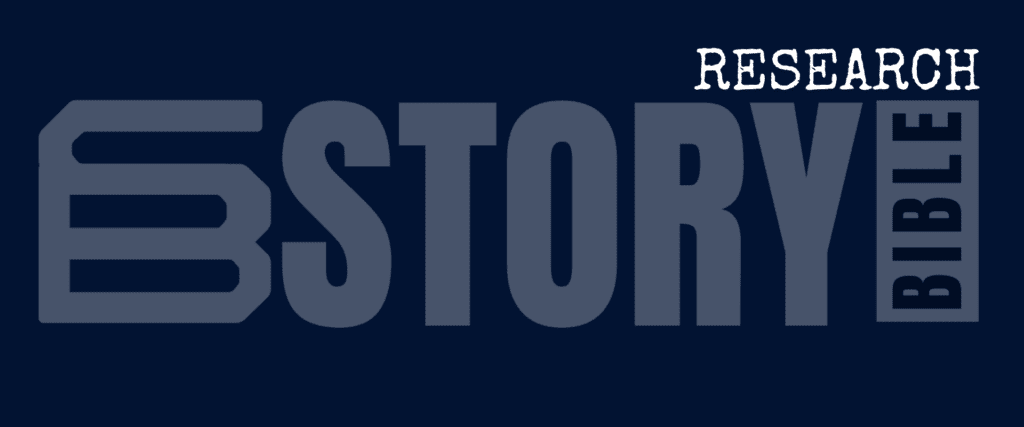The writing process consists of several essential steps that enhance efficiency. In this Story Bible blog, we offer expert tips on how you can write faster but still maintain quality writing.
Initially, writers engage in brainstorming and idea generation, which may involve techniques such as mind mapping, freewriting, or note-taking. Following this, the creation of an outline helps organize thoughts and provides a structural framework for the writing task.
The next phase involves drafting, where writers focus on expressing their ideas without excessive concern for perfection. This initial draft serves as a foundation for further refinement. Subsequently, the revision and editing stage allows for the improvement of content, structure, and language.
The final step in the writing process is proofreading and finalizing the work. This involves a thorough check for grammatical and spelling errors, ensuring consistency, and making any necessary last-minute adjustments. By adhering to these steps—brainstorming, outlining, drafting, revising, and proofreading—writers can optimize their workflow and produce high-quality content more efficiently.
Key Takeaways
- Understanding the writing process involves key steps such as brainstorming, outlining, drafting, revising, and editing to improve efficiency.
- Creative writing techniques like freewriting, mind mapping, and setting specific writing goals can spark inspiration and increase writing speed.
- Storytelling techniques such as creating compelling characters, using sensory details, and incorporating conflict can help craft narratives quickly.
- Fiction writing tips like setting a writing schedule, avoiding perfectionism, and using writing prompts can enhance speed without compromising quality.
- Improving writing skills involves strategies like practicing regularly, seeking feedback, and learning from other writers to write faster and more effectively.
- Balancing speed and quality in writing requires effective time management, setting realistic deadlines, and prioritizing tasks.
- Overcoming writer's block can be achieved by taking breaks, changing writing environments, and using prompts or exercises to maintain momentum and productivity.
Creative Writing: Techniques to Spark Inspiration and Increase Speed
Creative writing is a form of expression that allows writers to explore their imagination and create unique stories, poems, or essays. To spark inspiration and increase speed in creative writing, there are several techniques that writers can employ. One technique is to practice freewriting, which involves writing continuously for a set period of time without worrying about grammar or structure.
This can help writers tap into their subconscious and generate new ideas. Another technique is to use prompts or creative exercises to jumpstart the writing process. Prompts can be in the form of a single word, a photo, or a sentence that serves as a starting point for a new piece of writing.
Creative exercises, such as writing from a different perspective or experimenting with different genres, can also help writers break out of creative ruts and generate fresh ideas. Additionally, setting aside dedicated time for creative writing can help increase speed and productivity. By establishing a regular writing routine, writers can train their minds to be more creative and efficient.
This can be done by setting specific writing goals, such as writing for a certain amount of time each day or completing a certain number of words or pages per session. In conclusion, there are several techniques that writers can use to spark inspiration and increase speed in creative writing, including freewriting, using prompts and creative exercises, and establishing a regular writing routine. By incorporating these techniques into their practice, writers can enhance their creativity and produce work more efficiently.
Storytelling Techniques: How to Craft Compelling Narratives Quickly

Crafting compelling narratives quickly requires a combination of storytelling techniques that engage readers and keep them invested in the story. One technique is to create well-developed characters with clear motivations and desires. By understanding their characters' inner worlds, writers can create more authentic and relatable narratives that resonate with readers.
Another storytelling technique is to use vivid imagery and sensory details to bring the story to life. By appealing to the reader's senses, writers can create a more immersive experience that captures their attention and keeps them engaged. Descriptive language can help set the scene and create a rich atmosphere that draws readers into the story.
Additionally, pacing is an important storytelling technique that can help maintain momentum and keep the narrative moving forward. By varying the pace of the story through action-packed scenes, introspective moments, and plot twists, writers can create a dynamic and engaging reading experience. In summary, crafting compelling narratives quickly involves using storytelling techniques such as creating well-developed characters, using vivid imagery and sensory details, and mastering pacing.
By incorporating these techniques into their writing, authors can craft narratives that captivate readers and keep them turning the pages.
Fiction Writing Tips: Enhancing Speed Without Compromising Quality
When it comes to fiction writing, enhancing speed without compromising quality requires a strategic approach that balances creativity with efficiency. One tip is to set specific writing goals and deadlines to keep yourself accountable and on track. By breaking down larger projects into smaller, manageable tasks with deadlines, writers can maintain momentum and avoid procrastination.
Another tip is to embrace imperfection in the first draft. Instead of striving for perfection from the start, focus on getting your ideas down on paper without self-criticism. This can help you write more freely and quickly, knowing that you can always revise and refine your work later.
Additionally, outlining your fiction writing can help enhance speed by providing a roadmap for your story. By outlining key plot points, character arcs, and themes before diving into the actual writing process, writers can streamline their storytelling and avoid getting stuck in the middle of their work. In conclusion, enhancing speed without compromising quality in fiction writing involves setting specific goals and deadlines, embracing imperfection in the first draft, and outlining your story before diving into the writing process.
By implementing these tips, writers can increase their productivity without sacrificing the quality of their fiction.
Improving Writing Skills: Strategies for Faster, More Effective Writing
Improving writing skills involves honing both creativity and technical proficiency to produce faster, more effective writing. One strategy is to practice regularly by setting aside dedicated time for writing each day. By making writing a habit, writers can strengthen their skills and increase their speed over time.
Another strategy is to seek feedback from peers or mentors to identify areas for improvement. Constructive criticism can help writers pinpoint weaknesses in their writing and develop strategies for addressing them. Additionally, studying the work of established authors in your genre can provide valuable insights into effective storytelling techniques and writing styles.
Furthermore, expanding your vocabulary and refining your grammar skills can also improve your writing speed and effectiveness. By continuously learning new words and refining your understanding of grammar rules, writers can express themselves more clearly and efficiently. In summary, improving writing skills involves practicing regularly, seeking feedback from peers or mentors, studying established authors in your genre, and expanding your vocabulary while refining grammar skills.
By incorporating these strategies into their practice, writers can enhance their skills and write faster, whilst still maintaining quality prose.
Time Management: Balancing Speed and Quality in Your Writing

Balancing speed and quality in writing requires effective time management strategies that allow writers to work efficiently without sacrificing the integrity of their work. One strategy is to prioritize tasks by importance and deadline. By identifying the most critical aspects of a project and allocating time accordingly, writers can ensure that they focus on what matters most while managing their time effectively.
Another time management strategy is to minimize distractions during dedicated writing time. This can be achieved by creating a designated workspace free from interruptions or by using productivity tools such as time-blocking or the Pomodoro Technique to stay focused on writing tasks. Additionally, setting realistic expectations for your writing projects can help manage time effectively while maintaining quality.
By breaking down larger projects into smaller tasks with achievable deadlines, writers can avoid feeling overwhelmed and ensure that they have enough time to produce high-quality work. In conclusion, balancing speed and quality in writing requires effective time management strategies such as prioritizing tasks by importance and deadline, minimizing distractions during dedicated writing time, and setting realistic expectations for writing projects. By implementing these strategies, writers can work more efficiently while maintaining the quality of their work.
Overcoming Writer's Block: Tips for Maintaining Momentum and Productivity
Writer's block can be a significant obstacle to maintaining momentum and productivity in writing. However, there are several tips that writers can use to overcome writer's block and keep their creative juices flowing. One tip is to take breaks when feeling stuck.
Stepping away from your work for a short period can help clear your mind and provide a fresh perspective when you return to it. Another tip is to change up your environment or routine to stimulate new ideas. This could involve working in a different location or at a different time of day, or engaging in activities that inspire creativity such as going for a walk or listening to music.
Additionally, practicing mindfulness or relaxation techniques can help reduce stress and anxiety that may contribute to writer's block. Techniques such as deep breathing exercises or meditation can help calm the mind and promote mental clarity. In summary, overcoming writer's block involves taking breaks when feeling stuck, changing up your environment or routine to stimulate new ideas, and practicing mindfulness or relaxation techniques to reduce stress and anxiety.
By incorporating these tips into their practice, writers can maintain momentum and productivity even when faced with creative challenges. In conclusion, improving efficiency in the writing process involves several key steps such as brainstorming ideas, outlining, drafting, revising/editing, proofreading/finalizing. Creative writing techniques include freewriting, using prompts/exercises, setting aside dedicated time for writing.
Storytelling techniques involve creating well-developed characters, using vivid imagery/sensory details/pacing. Fiction writing tips include setting goals/deadlines/embracing imperfection/outlining stories. Improving writing skills includes practicing regularly/seeking feedback/studying established authors/expanding vocabulary/refining grammar skills.
Balancing speed/quality involves prioritizing tasks/minimizing distractions/setting realistic expectations for projects. Overcoming writer's block includes taking breaks/changing environment/practicing mindfulness/relaxation techniques. By incorporating these strategies into their practice, writers can enhance their skills and produce faster/more effective writing while maintaining momentum/productivity even when faced with creative challenges.
If you're looking to improve your writing speed without compromising quality, you might also be interested in learning about the power of theme in storytelling. Check out this article on how to effectively incorporate theme into your writing to create a more impactful and cohesive story. Understanding the importance of theme can help you write faster by providing a clear direction and purpose for your work.
If you want to read other posts on literature and the likes, check out our other blog, Enda Storrie.
TL:DR
What are some expert tips on how to write faster without sacrificing quality?
Some expert tips for writing faster without sacrificing quality include setting specific goals, eliminating distractions, using outlines, and practicing regularly.
How can setting specific goals help you to write faster?
Setting specific goals can help you write faster by providing a clear direction and focus, which can help writers stay on track and avoid wasting time on unnecessary details.
Why is it important to eliminate distractions when trying to write faster?
Eliminating distractions is important when trying to write faster because it allows writers to maintain their focus and concentration, which can significantly increase their writing speed.
How can using outlines help you to write faster without sacrificing quality?
Using outlines can help in writing faster without sacrificing quality by providing a clear structure and roadmap for the writing process, which can help writers organize their thoughts and ideas more efficiently.
Why is regular practice important for improving writing speed?
Regular practice is important for improving writing speed because it helps writers develop their skills and become more familiar with the writing process, which can ultimately lead to faster and more efficient writing.


